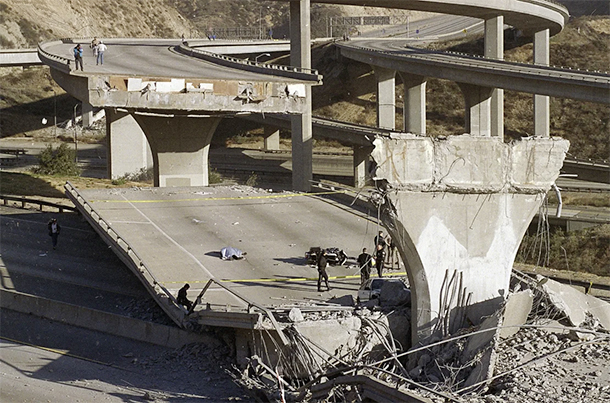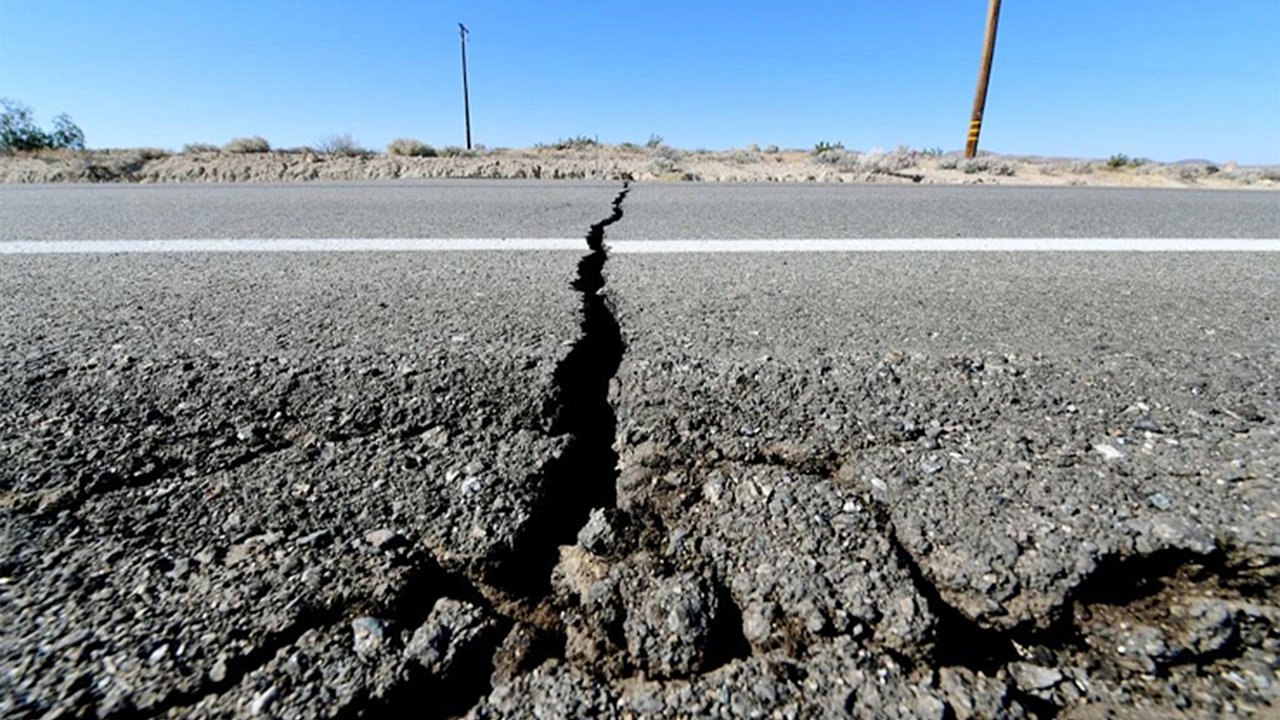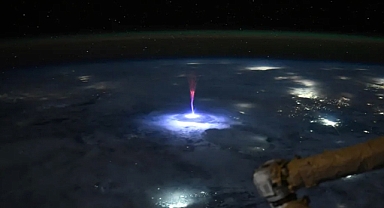Beautiful coastlines. Towering mountains. Hollywood glamour. Southern California is renowned for many things—earthquakes among them. Although seismic activity in the region has been unusually quiet for years, that period of calm may be ending. Several recent earthquakes have shaken residents awake, leaving them wondering: Is a major quake, the so-called “Big One,” looming on the horizon?In mid-August, a 4.4-magnitude tremor struck Pasadena, jostling homes and nerves across Los Angeles. Just a month later, on September 17th, a 4.7-magnitude quake occurred near Malibu. Neither caused serious damage, but these jolts are a stark reminder of the immense network of active faults beneath Southern California.Kate Scharer, a geologist with the U.S. Geological Survey (USGS), explains that the landscape of Southern California—its hills, valleys, and mountain ranges—is shaped by countless faults grinding against each other over time. The infamous San Andreas Fault gets the most attention, but it is far from the only one that could produce a catastrophic quake.“Magnitude-7 earthquakes are very possible here,” said Robert de Groot, leader of ShakeAlert operations at the USGS. He points to the Sierra Madre Fault, which runs along the San Gabriel Mountains, as another potential threat. “Those mountains exist because there’s a major fault beneath them.”The Past as a Warning
Southern California’s history is marked by devastating earthquakes. One of the most destructive in recent memory was the 6.7-magnitude Northridge earthquake in 1994, which struck without warning beneath Los Angeles. Buildings collapsed, freeways crumbled, and dozens of people lost their lives. That event also revealed an unsettling reality: many dangerous faults remain undiscovered until they rupture.Since the Northridge disaster, Los Angeles’ population has grown from nine million to over ten million people. Many residents, especially younger generations, have never experienced a major earthquake and may be unaware of how devastating such an event can be.Recent moderate quakes have offered a preview, but they raise the question: Are they precursors to something bigger? Allen Husker, a research professor at the California Institute of Technology, says that while clusters of smaller quakes don’t always signal a major event, history tells us that large earthquakes are inevitable.“We know there’s going to be another big one—it’s just a matter of when,” Husker said. “The question is never if, but when.”Preparedness Is Key
A challenge with studying earthquakes lies in their unpredictability. “Earthquakes happen at depths of 30,000 feet or more—about the same height as a plane flying at cruising altitude,” Scharer noted. That makes it difficult to pinpoint when stress along a fault will finally give way. Rather than dwell on uncertainty, experts urge residents to prepare now. Emergency kits should include essentials like water, food, and medication to last at least three days. The Centers for Disease Control (CDC) advises storing a gallon of water per person per day, along with non-perishable food and medical supplies.“Think beyond yourself—prepare with your community,” Scharer recommends. “Disasters aren’t just personal experiences. When a big quake hits, you’ll need the people around you.”A sense of community preparedness can make a significant difference in the aftermath of a major quake. The American Red Cross offers guidelines on how to create earthquake plans that include neighbors and family members.Technology and Training: Tools for Survival
Rather than dwell on uncertainty, experts urge residents to prepare now. Emergency kits should include essentials like water, food, and medication to last at least three days. The Centers for Disease Control (CDC) advises storing a gallon of water per person per day, along with non-perishable food and medical supplies.“Think beyond yourself—prepare with your community,” Scharer recommends. “Disasters aren’t just personal experiences. When a big quake hits, you’ll need the people around you.”A sense of community preparedness can make a significant difference in the aftermath of a major quake. The American Red Cross offers guidelines on how to create earthquake plans that include neighbors and family members.Technology and Training: Tools for Survival
Southern California residents can take advantage of ShakeAlert, a relatively new early warning system that spans California, Oregon, and Washington. Using ground sensors, the system detects seismic activity as it begins and sends alerts to phones, schools, and municipal offices within seconds. Though the warnings only offer a brief moment to act, they can be life-saving. De Groot emphasizes that early warnings are only part of the solution. Residents need to practice safety measures like “drop, cover, and hold on” when an alert sounds—or if they feel shaking without receiving one.To promote preparedness, the annual Great ShakeOut drill will take place on October 17th. This worldwide event encourages people to practice earthquake safety measures and review their emergency plans.“Don’t get complacent,” Husker advises. “A large quake could happen tomorrow—or next year. Either way, we need to stay ready.”Southern California’s beauty and lifestyle come with the ever-present threat of earthquakes. While recent tremors are not guarantees of a major event, they serve as critical reminders to stay prepared. Earthquakes are unpredictable, but with community support, emergency planning, and tools like ShakeAlert, residents can improve their chances of staying safe when the ground starts to move.
Southern California’s history is marked by devastating earthquakes. One of the most destructive in recent memory was the 6.7-magnitude Northridge earthquake in 1994, which struck without warning beneath Los Angeles. Buildings collapsed, freeways crumbled, and dozens of people lost their lives. That event also revealed an unsettling reality: many dangerous faults remain undiscovered until they rupture.Since the Northridge disaster, Los Angeles’ population has grown from nine million to over ten million people. Many residents, especially younger generations, have never experienced a major earthquake and may be unaware of how devastating such an event can be.Recent moderate quakes have offered a preview, but they raise the question: Are they precursors to something bigger? Allen Husker, a research professor at the California Institute of Technology, says that while clusters of smaller quakes don’t always signal a major event, history tells us that large earthquakes are inevitable.“We know there’s going to be another big one—it’s just a matter of when,” Husker said. “The question is never if, but when.”Preparedness Is Key
A challenge with studying earthquakes lies in their unpredictability. “Earthquakes happen at depths of 30,000 feet or more—about the same height as a plane flying at cruising altitude,” Scharer noted. That makes it difficult to pinpoint when stress along a fault will finally give way.
 Rather than dwell on uncertainty, experts urge residents to prepare now. Emergency kits should include essentials like water, food, and medication to last at least three days. The Centers for Disease Control (CDC) advises storing a gallon of water per person per day, along with non-perishable food and medical supplies.“Think beyond yourself—prepare with your community,” Scharer recommends. “Disasters aren’t just personal experiences. When a big quake hits, you’ll need the people around you.”A sense of community preparedness can make a significant difference in the aftermath of a major quake. The American Red Cross offers guidelines on how to create earthquake plans that include neighbors and family members.Technology and Training: Tools for Survival
Rather than dwell on uncertainty, experts urge residents to prepare now. Emergency kits should include essentials like water, food, and medication to last at least three days. The Centers for Disease Control (CDC) advises storing a gallon of water per person per day, along with non-perishable food and medical supplies.“Think beyond yourself—prepare with your community,” Scharer recommends. “Disasters aren’t just personal experiences. When a big quake hits, you’ll need the people around you.”A sense of community preparedness can make a significant difference in the aftermath of a major quake. The American Red Cross offers guidelines on how to create earthquake plans that include neighbors and family members.Technology and Training: Tools for SurvivalSouthern California residents can take advantage of ShakeAlert, a relatively new early warning system that spans California, Oregon, and Washington. Using ground sensors, the system detects seismic activity as it begins and sends alerts to phones, schools, and municipal offices within seconds. Though the warnings only offer a brief moment to act, they can be life-saving. De Groot emphasizes that early warnings are only part of the solution. Residents need to practice safety measures like “drop, cover, and hold on” when an alert sounds—or if they feel shaking without receiving one.To promote preparedness, the annual Great ShakeOut drill will take place on October 17th. This worldwide event encourages people to practice earthquake safety measures and review their emergency plans.“Don’t get complacent,” Husker advises. “A large quake could happen tomorrow—or next year. Either way, we need to stay ready.”Southern California’s beauty and lifestyle come with the ever-present threat of earthquakes. While recent tremors are not guarantees of a major event, they serve as critical reminders to stay prepared. Earthquakes are unpredictable, but with community support, emergency planning, and tools like ShakeAlert, residents can improve their chances of staying safe when the ground starts to move.









